Looking to learn more about Milwaukee band saws? In this comprehensive article, we will cover everything you need to know about these powerful tools.
From understanding how Milwaukee band saws work and the different types available, to the benefits of using them and key features to look out for, we’ve got you covered.
We’ll also provide tips on how to properly use a Milwaukee band saw, common issues you may encounter, and how to fix them.
Stay tuned for expert insights and advice on getting the most out of your Milwaukee band saw.
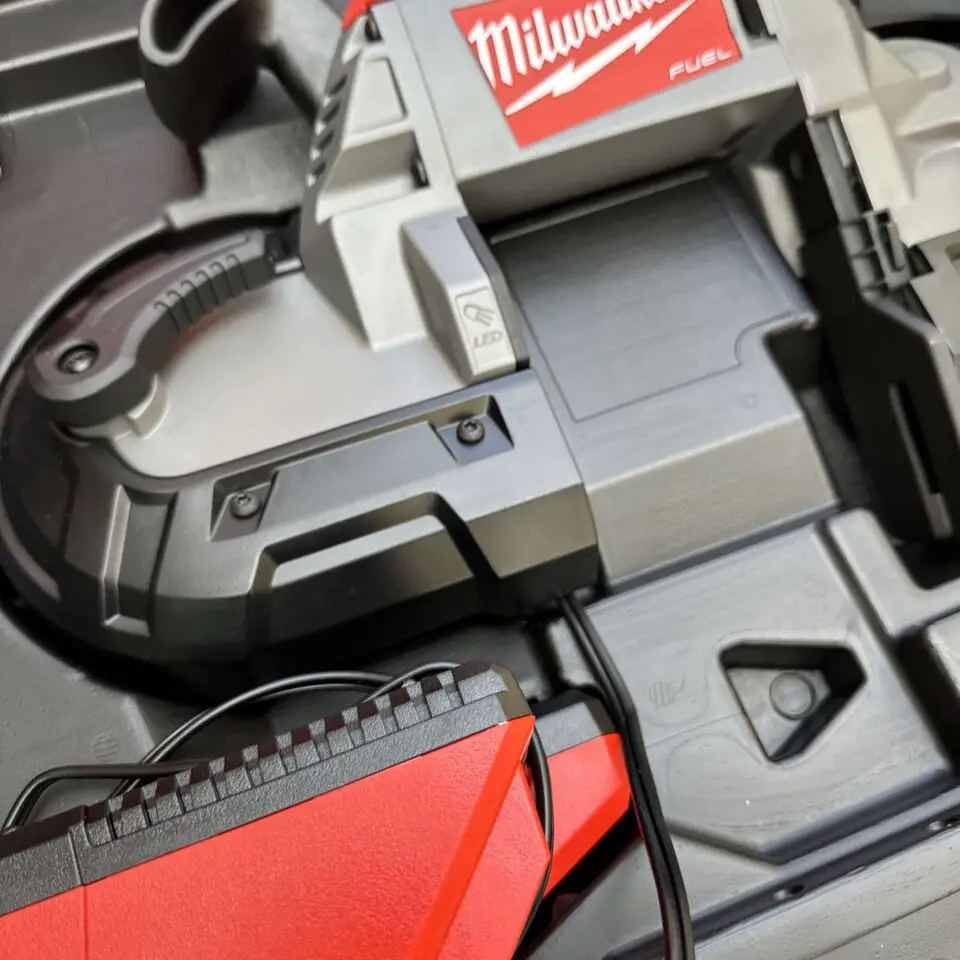
Key Features:
- Up to 40% Faster Cuts: Ensures efficient and quick cutting performance for increased productivity.
- Metal Cutting Capacity: Provides a metal cutting capacity of up to 82.6mm for versatile applications in plumbing, construction, electrical, HVAC, and more.
- Dual-Actuation Trigger: Enhances control and efficiency, making the saw more user-friendly.
- Enhanced Cutting Capacity: Offers a cutting capacity of 35-3/8” x ½” for improved versatility.
- POWERSTATE Brushless Motor: Delivers fast cutting speeds for efficient operation.
- Compact Design: Lightweight and compact band saw design for comfortable overhead cuts and portability.
- Tool-Free Locking Adjustable Shoe: Allows quick adjustment from an extended shoe to no shoe, providing flexibility in cutting applications.
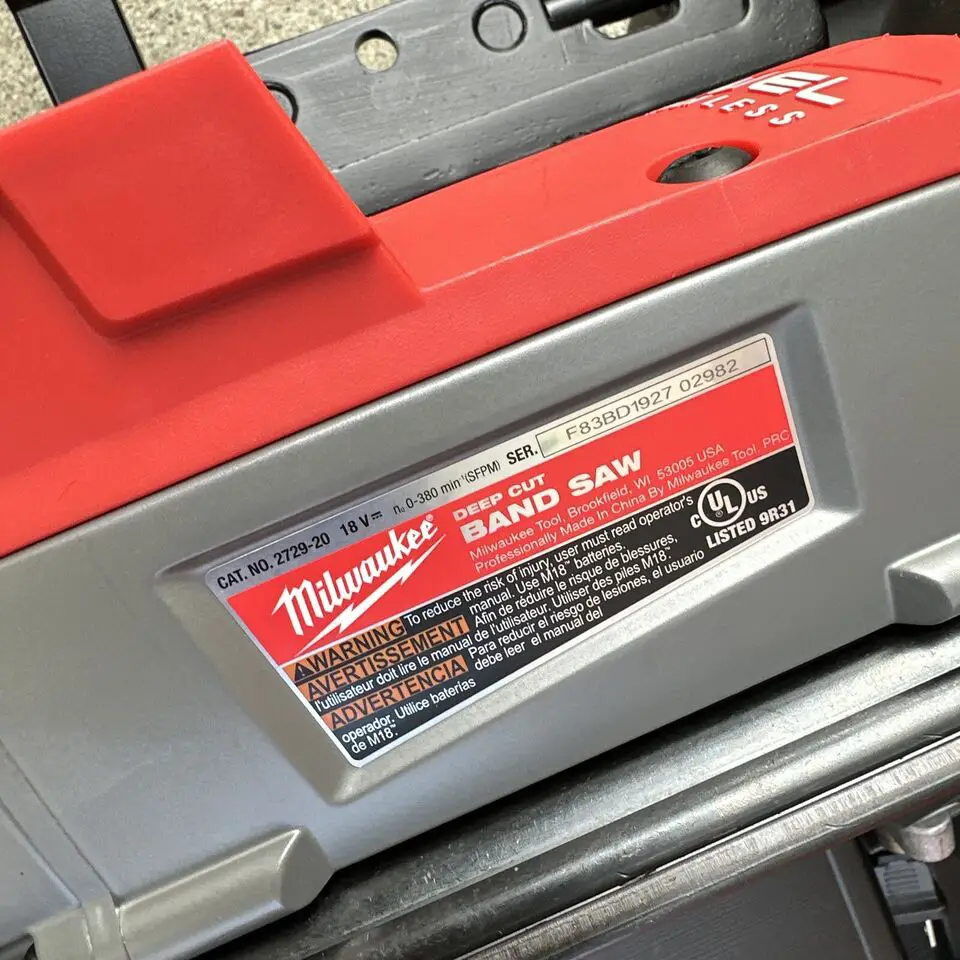
Unleashing the Beast: My Journey with the Deep Cut Portable Band Saw
Introduction: The Call for Power
As a dedicated woodworker, I had always been content with the soothing hum of my trusty cutoff saw as it effortlessly sliced through timber. However, fate had a different plan for me when the need arose to tackle metalwork for repairing my lumber rack. Faced with the daunting task of venturing into the world of metal cutting, I found myself seeking a tool that could match my woodworking prowess. And so, the journey with the Deep Cut Portable Band Saw began.
The Arrival: Unveiling the Beast
With eager anticipation, I awaited the arrival of my new companion. Swiftly delivered to my doorstep, the Deep Cut Portable Band Saw greeted me with the promise of power and precision. Despite the absence of blades (a minor setback easily remedied), I wasted no time in putting this beast to the test.
Initial Encounter: Taming the Beast
The initial moments with the band saw were akin to a thrilling rollercoaster ride. As I made my first cuts, the raw power of the machine reverberated through my hands, leaving me with a sense of exhilaration. Admittedly, the cuts were a tad erratic at first, reminiscent of my youthful endeavors. Yet, with each slice, I found myself gaining mastery over the tool, guided by its well-balanced design.
Unveiling Excellence: Fit, Finish, and Functionality
In a world where craftsmanship often takes a backseat to mass production, the Deep Cut Portable Band Saw stands as a testament to excellence. Despite its origins in distant lands, the meticulous attention to detail showcased in its construction left me in awe. From its resilient rubber covers to its flawless finish, every aspect exuded quality.

Embracing Simplicity: The Essence of Usability
In a realm cluttered with superfluous features, the band saw’s simplicity proved to be its greatest strength. With just two speeds and no unnecessary frills, it embodied the essence of efficiency. Changing blades was a breeze, and its intuitive tracking system ensured seamless operation. It was a tool designed for those who value performance above all else.
The Verdict: A Testament to Endurance
As I reflect on my journey with the Deep Cut Portable Band Saw, I am filled with admiration for its unwavering durability. Like a steadfast companion, it has stood by me through thick and thin, never faltering in its performance. With each passing day, I am reminded of the enduring legacy of craftsmanship embodied by Milwaukee tools.
In conclusion, if you’re seeking a tool that combines power, precision, and reliability, look no further than the Deep Cut Portable Band Saw. It’s not just a tool; it’s a testament to the enduring spirit of craftsmanship. Join me in unleashing the beast within and embark on your own journey of discovery with this remarkable machine.
Key Takeaways:
- A Milwaukee band saw is a versatile, portable, and durable tool that is used for cutting various materials.
- To ensure proper functioning, it is important to follow safety precautions, adjust blade tension, and use the correct cutting techniques when using a Milwaukee band saw.
- Common issues with Milwaukee band saws include blade misalignment, motor malfunction, and blade breakage, which can be fixed by following proper maintenance and care procedures.

What is a Milwaukee Band Saw?
A Milwaukee Band Saw is a powerful cutting tool manufactured by Milwaukee Tool, known for its precision and efficiency in various cutting applications.
Milwaukee Band Saws are revered in woodworking and metalworking communities for their robust construction and reliable performance. Crafted with top-notch materials and engineering, these band saws can tackle a wide range of materials with ease, from wood to metal, delivering clean and accurate cuts every time.
Woodworkers, metal fabricators, and DIY enthusiasts alike trust the Milwaukee Band Saw to deliver consistent results, making it a staple in workshops and job sites. Whether you need to make intricate cuts or rip through thick materials, this versatile tool has the power and precision to get the job done efficiently.
How Does a Milwaukee Band Saw Work?
A Milwaukee Band Saw operates by leveraging its innovative brushless motor technology, providing consistent power and performance for smooth cutting operations.
Unlike traditional band saws that rely on brushed motors, the brushless motor mechanism in a Milwaukee Band Saw offers numerous advantages. It delivers power more efficiently, resulting in increased battery life and reduced wear and tear. This enhanced power delivery ensures a more precise and controlled cutting experience, even when tackling tough materials. The operational efficiency of the brushless motor also minimizes heat buildup, extending the tool’s lifespan and overall durability.
What are the Different Types of Milwaukee Band Saws?
Milwaukee offers a range of Band Saws, including corded and cordless models, catering to diverse user preferences and cutting requirements.
In terms of Milwaukee Band Saws, each type offers its own set of advantages. The corded models provide consistent power without the need for recharging, making them ideal for heavy-duty applications that demand uninterrupted cutting performance.
On the other hand, the cordless options bring unmatched portability and freedom of movement, perfect for jobsites or workshops where mobility is key. These models often feature advanced battery technology, ensuring long run times and efficient operation.
Whether you opt for a corded or cordless Band Saw from Milwaukee, you can enjoy precise cuts, enhanced control, and exceptional durability, thanks to the brand’s commitment to quality and innovation.
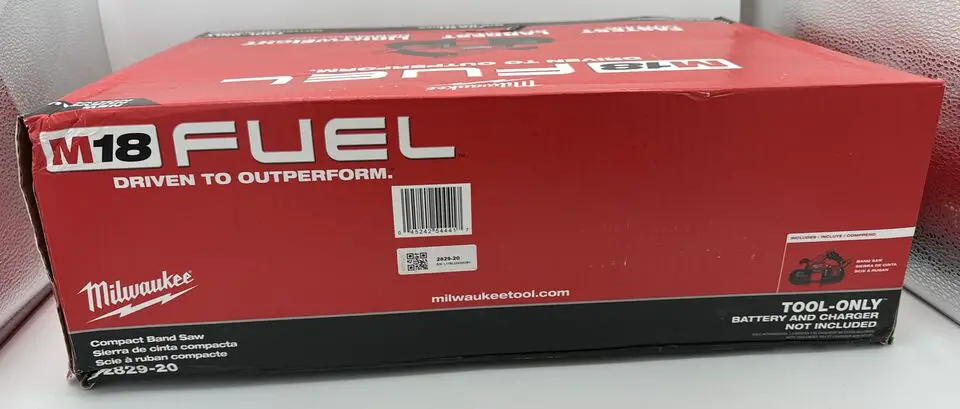
Corded Band Saws
Milwaukee’s Corded Band Saws are known for their consistent power delivery and reliable performance, making them ideal for heavy-duty cutting tasks.
Power output is a key standout feature of Milwaukee’s Corded Band Saws, as they boast robust motors that enable smooth and efficient cutting through various materials. This high power capacity ensures that the saws tackle even the toughest of applications with ease, providing users with consistent performance. Their exceptional build quality and durability make them a long-lasting investment for professionals in need of reliable tools.
Cordless Band Saws
The Cordless Band Saws from Milwaukee offer enhanced portability and flexibility, allowing users to tackle cutting jobs in various locations without the constraints of cords.
These innovative saws are designed to provide efficient and precise cutting performance, making them ideal for remote work environments where power sources may be limited.
With long-lasting battery power and a compact design, Milwaukee’s Cordless Band Saws are perfect for on-the-go professionals or those working in tight spaces.
The Milwaukee brand is synonymous with durability and reliability, ensuring that these band saws can withstand the demands of tough job sites.
What Are the Benefits of Using a Milwaukee Band Saw?
Product Specifications
Utilizing a Milwaukee Band Saw offers numerous advantages, including exceptional portability, versatility in cutting applications, and unmatched durability for long-term usage.
Portability is a key feature of Milwaukee Band Saws, allowing users to easily move the tool around job sites or workshops. This flexibility enables cutting tasks to be efficiently completed wherever they are needed, optimizing work efficiency.
Versatility is another highlight of these band saws, as they can be used for various cutting applications, from intricate designs to straight cuts, providing users with a wide range of options for their projects. The robust construction of Milwaukee Band Saws guarantees reliability and longevity, ensuring consistent performance over time.
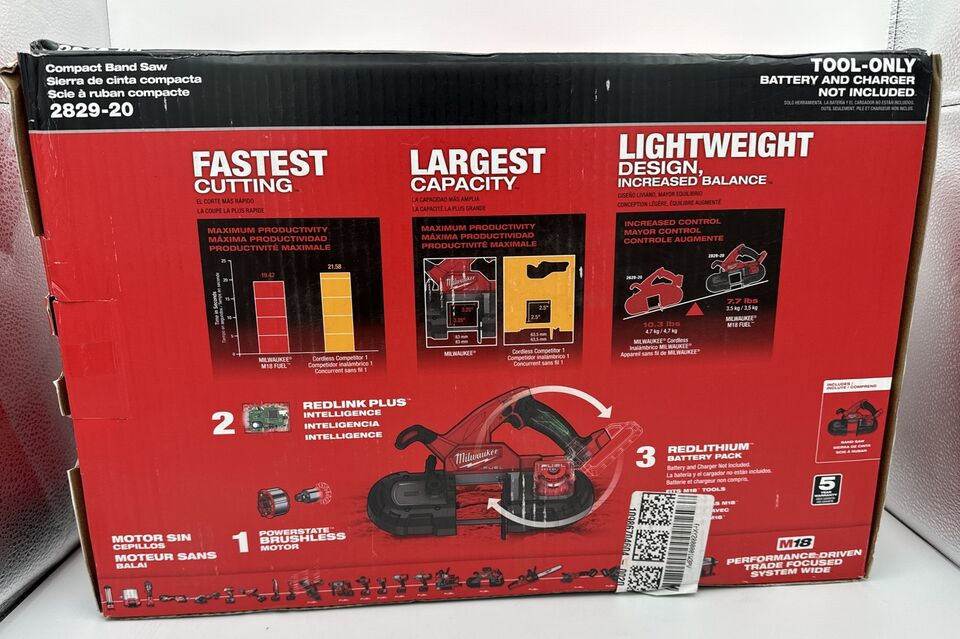
Portability
The portability of Milwaukee Band Saws enables users to move them easily between job sites or work areas, enhancing efficiency and convenience in cutting operations.
Having a portable band saw like those from Milwaukee proves to be a game-changer for professionals in various industries. Being able to transport the tool effortlessly means that workers can easily bring it to different locations where cutting tasks need to be performed. This flexibility allows for on-the-go cutting solutions without the need for heavy machinery or stationary equipment. In addition, the job site mobility provided by Milwaukee Band Saws enables workers to adapt to different work environments quickly and efficiently, ultimately saving time and increasing productivity.
Compact Band Saw Versatility
Milwaukee Band Saws are renowned for their versatility, accommodating a wide range of cutting tasks and materials with precision and ease.
These powerful tools are designed to handle various cutting applications, including metal, wood, and plastic, making them ideal for both professional craftsmen and DIY enthusiasts. Their adjustable speed settings and blade options provide users with the flexibility to tackle different projects with efficiency and accuracy.
Whether you are working on intricate designs or heavy-duty construction projects, a Milwaukee Band Saw can adapt to your specific needs, delivering consistent results each time. With features like quick blade changes and ergonomic designs, these saws offer convenience and reliability in any cutting situation.
Durability
The durability of Milwaukee Band Saws ensures long-lasting performance and reliability, making them a trusted tool for professionals and DIY enthusiasts alike.
With a reputation for being built to last, Milwaukee Band Saws are crafted with high-quality materials and engineered to withstand the toughest working conditions. Their robust construction not only enhances their longevity but also ensures they can handle heavy-duty cutting tasks with ease. These tools are designed to resist wear and tear, allowing users to rely on them for extended periods without compromising on performance. Whether it’s on a job site or in a workshop, Milwaukee Band Saws are known for their reliability and durability.
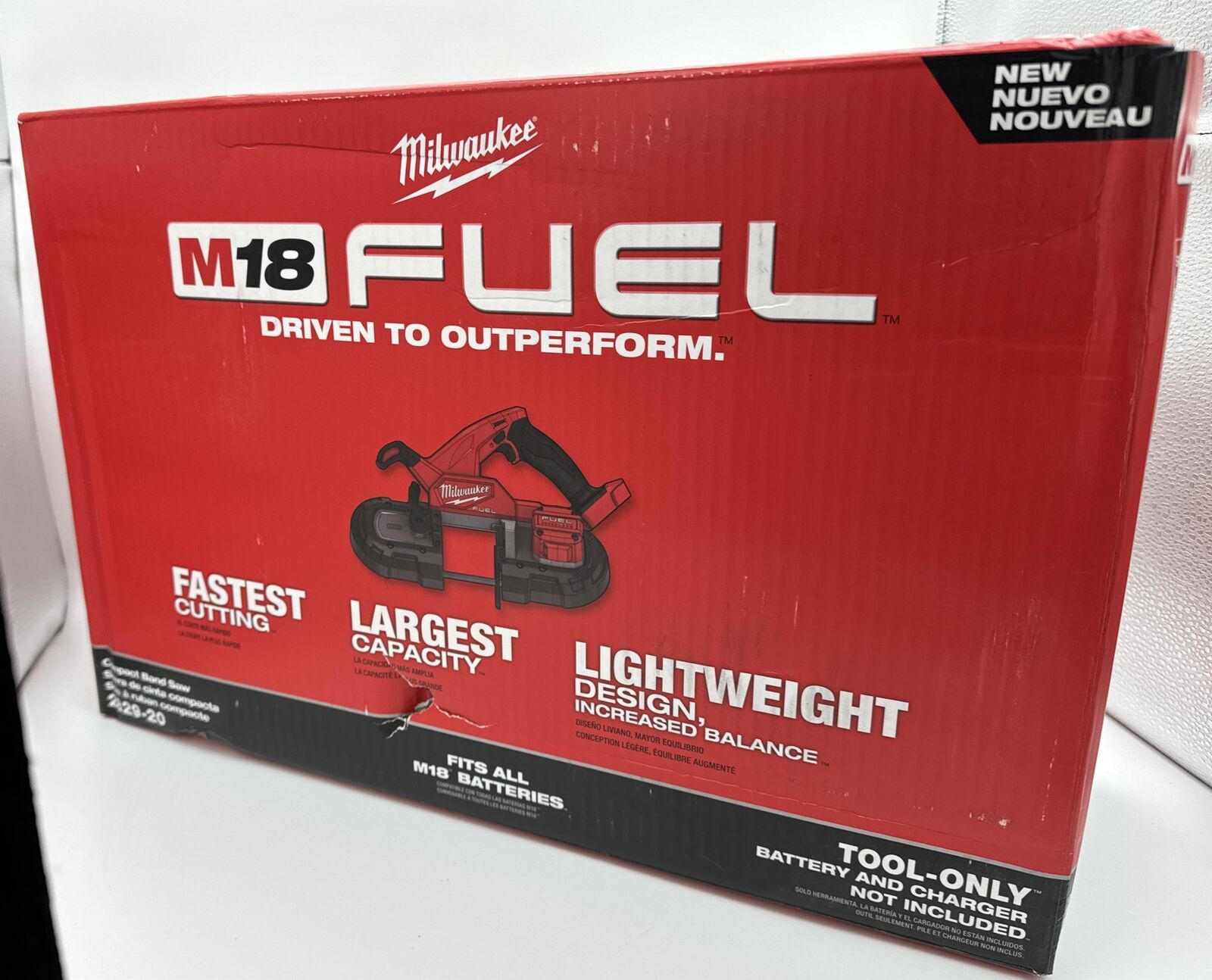
What are the Features to Look for in a Milwaukee Band Saw?
When selecting a Milwaukee Band Saw, key features to consider include blade size and speed, motor power, cutting capacity, and ergonomic design for optimal cutting performance.
Ensuring the blade size and speed match the intended applications is crucial, as it influences the materials the saw can effectively cut. Evaluating the motor power is essential to accommodate different types of cutting tasks, ensuring smooth and precise cuts.
The cutting capacity of the band saw is a key factor to assess, as it determines the maximum thickness of materials that can be cut. An ergonomic design is also vital, as it enhances user comfort and safety during long cutting sessions.
Blade Size and Speed
The blade size and speed of Milwaukee Band Saw significantly impact its cutting efficiency and precision, with larger blades and variable speeds offering versatility in different applications.
In terms of Milwaukee Band Saws, choosing the right blade size and speed is crucial for achieving the desired cutting outcomes. A larger blade size allows for more substantial cuts, ideal for tackling thick materials with ease. On the other hand, variable speeds offer the flexibility to adjust cutting accuracy and efficiency based on the material being worked on.
This combination of blade size and speed not only enhances the saw’s performance but also contributes to a smoother and more precise cutting experience, ultimately improving user satisfaction. Understanding how these factors work together can make a significant difference in the quality and versatility of your cutting tasks.
Motor Power
The motor power of a Milwaukee Band Saw determines its cutting performance, with higher power ratings delivering faster cuts and increased efficiency in various materials.
Band saw motors with greater power output possess the ability to slice effortlessly through dense hardwoods, metals, and plastics, providing a versatile cutting experience.
- Motor power directly impacts the overall speed and precision of the cuts, allowing users to tackle large projects with ease and accuracy.
- The enhanced torque generated by a robust motor contributes to smoother operations, reducing vibration and ensuring a consistent cutting performance.
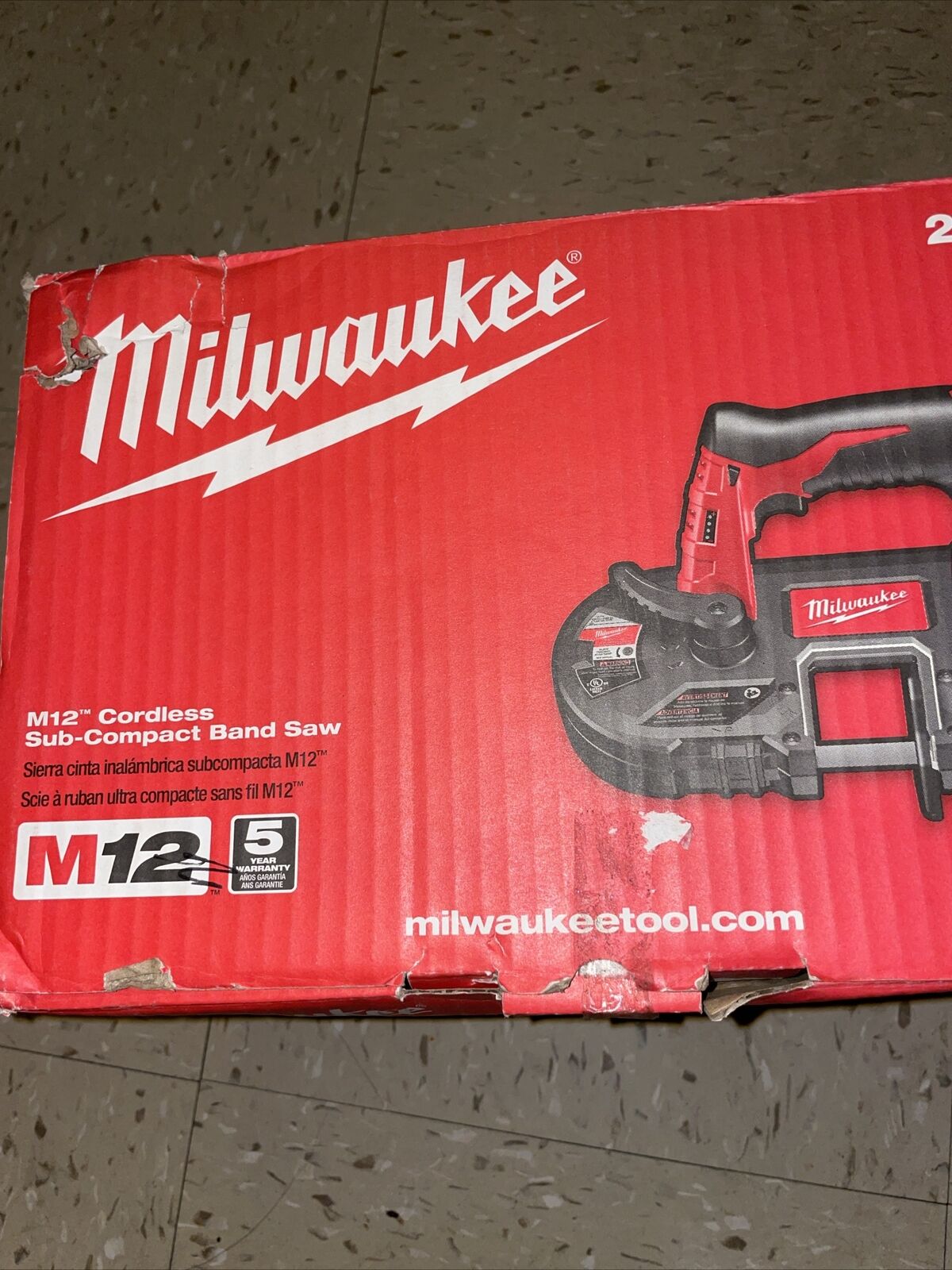
Cutting Capacity
The cutting capacity of a Milwaukee Band Saw defines the maximum thickness and width of materials it can cut, ensuring compatibility with diverse workpieces and projects.
Having a sufficient cutting capacity is crucial for enabling versatility in woodworking or metalworking tasks.
These band saws need to handle a range of material sizes and shapes to cater to different project requirements. By providing ample cutting depth and throat capacity, a Milwaukee Band Saw enables users to tackle various materials effortlessly.
Whether you’re working on intricate designs with thin sheets or cutting through thick stock, a band saw with a generous cutting capacity offers the flexibility needed to accomplish intricate cuts or handle large-scale projects with ease.
Ergonomics
Ergonomic design features in Milwaukee Band Saws enhance user comfort, control, and safety during cutting operations, promoting efficient and fatigue-free usage.
By incorporating ergonomic principles in their design, Milwaukee Band Saws have managed to optimize the user experience significantly. Elements such as adjustable handles and weight distribution have been strategically implemented to reduce strain on the user’s hands and arms, allowing for extended periods of operation without discomfort.
The inclusion of soft-grip materials on key touchpoints not only enhances comfort but also improves overall control over the tool, resulting in more precise cuts and reduced chances of accidents.
How to Properly Use a Milwaukee Band Saw?
To ensure optimal performance and safety, mastering the proper use of a Milwaukee Band Saw involves adhering to safety precautions, correct blade installation, blade tension adjustment, effective cutting techniques, and regular maintenance practices.
Begin with safety first by wearing appropriate protective gear such as safety glasses, ear protection, and gloves before operating the band saw.
When installing a new blade, ensure it is compatible with your Milwaukee Band Saw model and that the blade teeth are pointing in the correct direction for the type of material you are cutting.
Proper tension is crucial for smooth cuts and blade longevity, so refer to your band saw’s manual for specific tension adjustment instructions.
Mastering different cutting techniques such as rip cuts, crosscuts, and resawing will help you achieve precise results in various woodworking projects.
Regular maintenance tasks include cleaning the saw, inspecting for any loose parts, and lubricating moving components to keep your Milwaukee Band Saw in top condition.
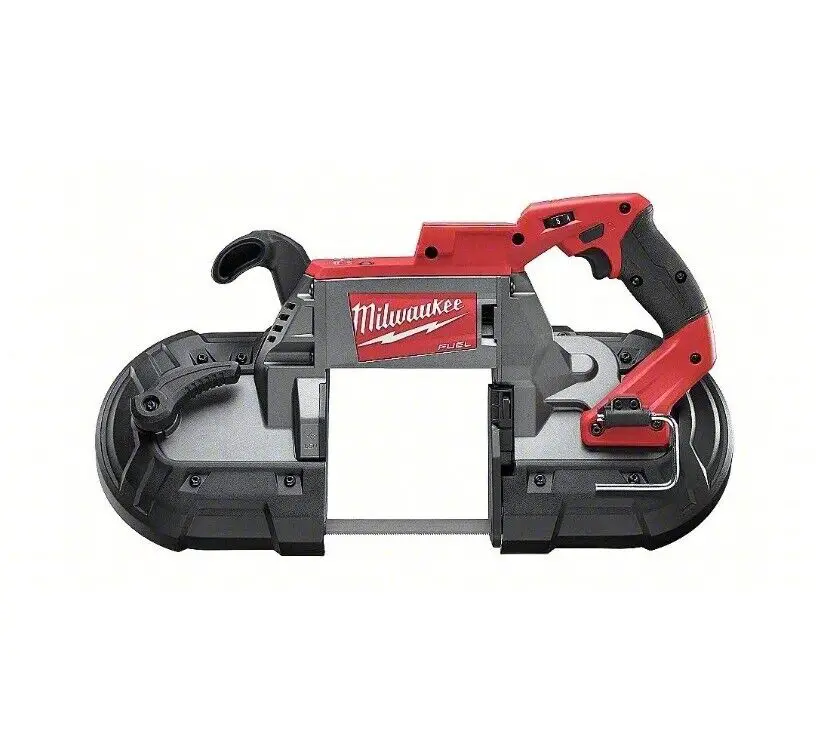
Safety Precautions
Prioritizing safety precautions when operating a Milwaukee Band Saw is paramount to prevent accidents, injuries, and ensure a secure work environment.
When using a Milwaukee Band Saw, it is critical to adhere to specific safety protocols to safeguard yourself and those around you from potential harm. One of the foremost precautions is wearing appropriate protective gear such as safety glasses, gloves, and ear protection to shield yourself from flying debris and loud noise. Always maintain a clean and organized workspace to prevent accidents caused by tripping over clutter or misplaced tools.
Proper Blade Installation
Correct blade installation on a Milwaukee Band Saw is crucial for optimal cutting performance and safety, requiring precise alignment and secure fastening to prevent accidents.
In terms of proper blade installation, it all begins with selecting the right blade for the material you intend to cut.
- Start by unplugging the saw for safety, ensuring no power source is connected during the installation.
- Next, follow the manufacturer’s guidelines for blade tension adjustment, as this is critical for smooth operation.
- Proper alignment of the blade teeth and guides is essential to prevent any wandering or drifting during the cutting process.
Remember to always wear safety goggles and gloves when handling blades, and never rush through the installation process. Taking your time to ensure each step is done accurately will result in a more efficient and safe cutting experience with your Milwaukee Band Saw.
Adjusting Blade Tension
Maintaining the correct blade tension on a Milwaukee Band Saw is essential to ensure precise cuts, blade longevity, and optimal performance across various materials.
Proper blade tension adjustment involves tightening or loosening the tensioning knob to achieve the manufacturer’s recommended tension levels. Utilizing a tension gauge can aid in achieving accurate tension settings.
Benefits of maintaining optimal tension include reducing blade breakage, minimizing vibration, and enhancing cutting accuracy. It is crucial for users to regularly check and adjust the blade tension, especially when switching between different blade types or when noticing deviations in cut quality.
A properly tensioned blade ensures smoother cuts, prolongs the life of the blade, and enhances the overall cutting experience.
Cutting Techniques
Mastering the correct cutting techniques with a Milwaukee Band Saw enhances efficiency, accuracy, and safety during various cutting tasks, ensuring optimal results and blade longevity.
When working with a Milwaukee Band Saw, it’s essential to understand the versatility it offers in handling different cutting needs.
- Straight cuts are commonly used for precision projects like fitting joints or creating uniform pieces.
- Curves on materials can be achieved by carefully maneuvering the blade, ensuring a smooth and accurate finish.
- Angled cuts require adjusting the saw’s settings to the desired angle, allowing for precise corners and bevels.
- Specialty cuts, like notches or intricate shapes, demand patience and a steady hand to execute with finesse.
By mastering these cutting techniques, users can elevate their craftsmanship and achieve professional-grade results with their Milwaukee Band Saw.
Maintenance and Care
Regular maintenance and care routines for a Milwaukee Band Saw prolong its lifespan, ensure consistent performance, and prevent unexpected breakdowns, promoting tool longevity and reliability.
Keeping your band saw in top condition involves several crucial steps. First and foremost, cleanliness is key. Proper cleaning procedures help prevent sawdust buildup, which can impede the saw’s functionality. Regular lubrication of moving parts is essential to reduce friction and wear. In terms of blade care, ensuring correct tension and sharpness is vital for efficient cutting.
Conducting regular inspections to check for any loose bolts, damaged parts, or misalignments is also crucial. This proactive approach allows you to address issues before they escalate, maintaining your Milwaukee Band Saw in optimal working condition.
What Are Some Common Issues with Milwaukee Band Saws and How to Fix Them?
Encountering issues like blade misalignment, motor malfunctions, blade breakage, or dust collection problems with Milwaukee Band Saws can disrupt workflow, but prompt troubleshooting and corrective measures can resolve these challenges effectively.
Blade misalignment in Milwaukee Band Saws often manifests as inaccurate cuts, resulting in wasted material and imprecise work. This problem is commonly caused by a loose blade or improper tension adjustment. Ensure to tighten the blade properly and adjust the tension for optimal performance.
Motor issues, another common headache, can exhibit symptoms like overheating, strange noises, or lack of power. These problems can stem from issues such as worn out brushes, damaged bearings, or electrical faults. It is crucial to inspect and maintain the motor components regularly to prevent breakdowns.
Blade Misalignment
Blade misalignment in a Milwaukee Band Saw can lead to inaccurate cuts and reduced performance, necessitating realignment procedures and blade inspection for precise and efficient operation.
Several factors can contribute to blade misalignment, including worn out or damaged components, improper tensioning, or even environmental factors like humidity and temperature fluctuations. To address these issues, regular maintenance and inspection are crucial to ensure the saw functions optimally.
Proper realignment techniques involve adjusting the blade guides, aligning the wheels, and checking the blade tension to achieve the desired accuracy. Calibration processes are also essential to fine-tune the blade setup and achieve consistent cutting results.
Motor Malfunction
Motor malfunctions in a Milwaukee Band Saw can impede cutting performance and safety, requiring diagnosis, repair, or replacement of faulty components to restore efficient operation.
One common cause of motor malfunctions in Milwaukee Band Saws is overheating due to dust accumulation in the motor housing, which can lead to insulation breakdown or burnt windings. To rectify this issue, it is essential to clean the motor housing regularly and ensure adequate ventilation around the motor. Improper voltage supply or worn-out motor brushes can also contribute to motor problems.
A thorough inspection of these components is necessary to identify the root cause of the malfunction and implement the appropriate repair strategy.
Blade Breakage
Blade breakage incidents can hinder cutting tasks and pose safety risks when using a Milwaukee Band Saw, necessitating blade inspection, replacement, and adjustment to prevent further damage.
Regular inspection of the blade is crucial to identify any signs of wear and tear that might lead to breakage. Look out for cracks, dull teeth, or any irregularities.
When replacing the blade, ensure to select the correct size and type recommended for your specific saw model to avoid compatibility issues.
Proper tension adjustment also plays a vital role in preventing blade breakage; too much tension can damage the blade, while too little can cause it to slip off track.
Dust Collection Problems
Dust collection issues in a Milwaukee Band Saw can affect visibility, cleanliness, and air quality in the working environment, prompting regular cleaning, maintenance, and upgrade of dust collection systems for optimal performance.
Regular cleaning of the band saw’s dust collection system is essential to prevent clogging and ensure efficient airflow. Maintaining a clear pathway for dust extraction helps in reducing the risk of motor overheating and potential malfunctions.
Upgrading to a higher-capacity dust collector or installing additional extraction points can significantly improve dust capture efficiency and create a healthier workspace. It is also important to inspect and replace filters regularly to maintain proper suction and filtration. By addressing these challenges proactively, operators can enhance both the longevity of their equipment and overall air quality in the workplace.
Frequently Asked Questions
What is a Milwaukee band saw?
A Milwaukee band saw is a type of power tool used for cutting various materials, such as wood, metal, and plastic. It consists of a long, continuous blade with teeth that move in a circular motion to make precise cuts.
What makes Milwaukee band saws stand out from other brands?
Milwaukee band saws are known for their durability, power, and precision. They are designed with high-quality materials and advanced technology to provide reliable and efficient performance.
Can a Milwaukee band saw be used for both professional and DIY projects?
Yes, Milwaukee band saws are versatile tools that can be used for a variety of projects, from simple home repairs to professional construction work. They are suitable for both experienced professionals and DIY enthusiasts.
Are there different types of Milwaukee band saws?
Yes, Milwaukee offers a range of band saw models, including corded and cordless options, compact and full-size designs, and different blade sizes for various cutting needs. There is a Milwaukee band saw to fit every job.
How do I maintain my Milwaukee band saw?
Proper maintenance is crucial for the longevity and performance of your Milwaukee band saw. This includes regularly cleaning and lubricating the blade, checking for any loose or damaged parts, and storing it in a dry and secure place when not in use.
Can I purchase replacement parts for my Milwaukee band saw?
Yes, Milwaukee offers a variety of replacement parts for their band saws, including blades, guides, and motors. It is important to always use genuine Milwaukee parts to ensure the best quality and compatibility with your tool.
Read also: Echo CS 400 Chainsaw Review
